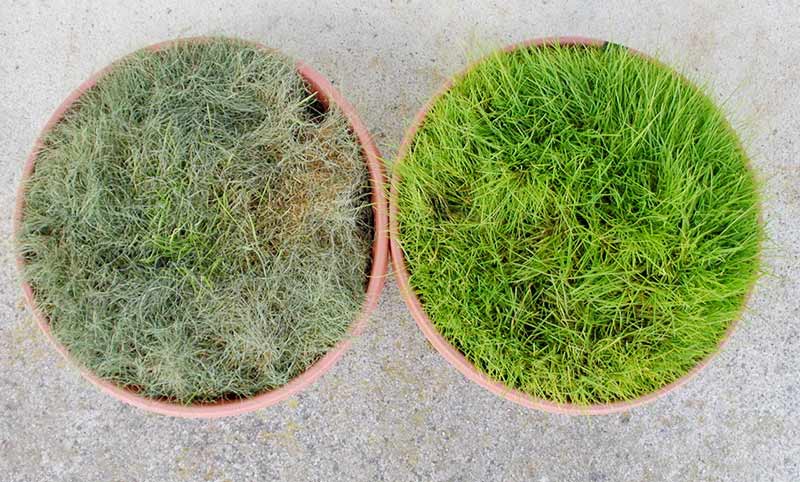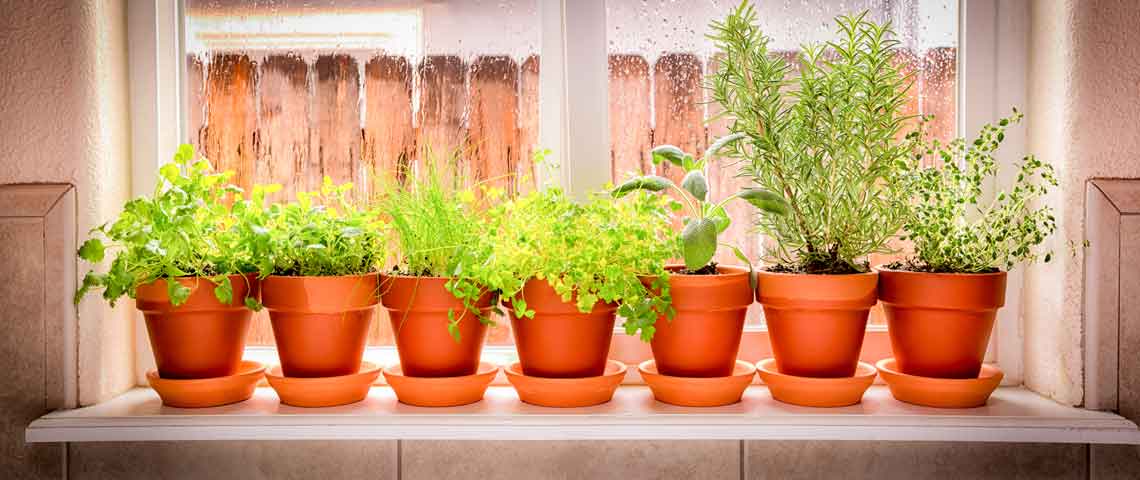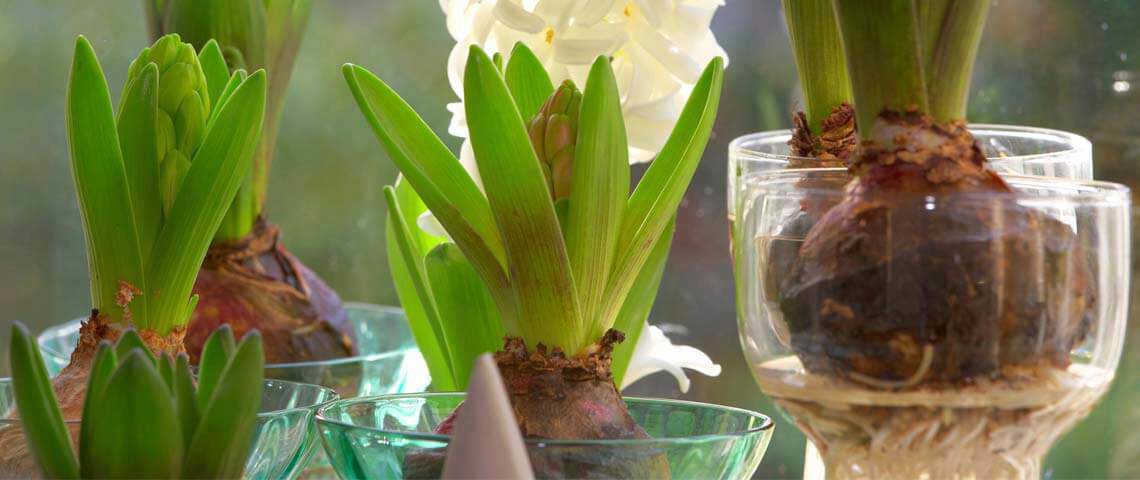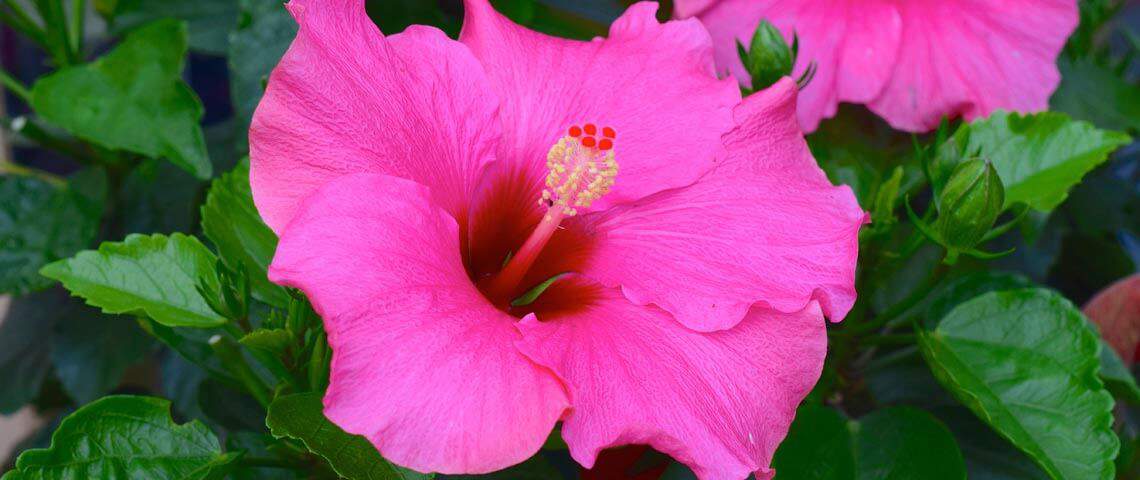Why and How to Improve Grass Roots with Mycorrhizal Fungi
Healthy lawns contain a secret ingredient: mycorrhizal fungi. Invisible to the naked eye, mycorrhizae form a mutually beneficial relationship with grass roots, stimulating lawns to grow thick and lush. Mycorrhizae do this by colonizing on grass roots, which greatly expands the absorptive areas. Under a microscope, these fungal filaments look like string and become extensions of the roots, exponentially expanding root reach into the soil. This means greater and more efficient uptake of nutrients and water by your turfgrass.
Importance of Replenishing Mycorrhizal Fungi in Turf
About 90 percent of the world’s plants form a relationship with mycorrhizae fungi in their native habitats, according to Dr. Mike Amaranthus, President of Mycorrhizal Applications, Inc. "Mycorrhizae are as old as time," he says," but only in recent years have forward-thinking companies, such as Pennington, included them in specially formulated turf fertilizers. Because the soil in the average yard is often depleted of these microscopic purveyors of soil health, inclusion in fertilizers is a very good thing."
While soils in natural settings are full of beneficial soil organisms, including mycorrhizal fungi, research shows that disruption of soil through common site-preparation practices — grading , compaction, removal of natural vegetation, weed overgrowth and tilling — reduces and even eliminates mycorrhizae.1 Whether you are planning to seed or lay new turf, in order to have healthy soil and a thriving lawn, you need to reestablish these beneficial fungi.
Benefits of Inoculating Your Lawn with Mycorrhizal Fungi
Once your lawn’s soil is teeming with mycorrhizae, you can expect a wide variety of benefits:
- Maximized use of fertilizers. The extensive tentacle-like filaments that mycorrhizal fungi send into the soil release enzymes that unlock 15 major macro and micronutrients.
- Healthy root systems. Thick, robust lawns growing in “living” soil ward off pests and diseases more easily.
- Increase in turfgrass establishment. Inoculating your site with mycorrhizae when preparing your soil for seeding increases rate of establishment—sometimes doubling the percent of grass cover and significantly increasing the root biomass.2 This can mean obtaining the grass coverage you desire with the first seeding, rather than having to reapply several times.
- Binds soil. Mycorrhizae bind soil particles, which improves the porosity and drainage of soil, and allows for air and water movement throughout the soil. The lack of compaction leads to healthier turf root growth.
- Improved drought resistance. Mycorrhizal fungi’s ability to reach deep into the soil for water and make it available to your lawn creates turf that is better able to withstand drought.

Adding Mycorrhizal fungi results in a visible difference to your lawn while also providing a variety of benefits. The pot on the right contains mycorrhizal fungi.
Mycorrhizae can reduce stress from moisture loss in grass and result in lawns that spring back quickly from wilting caused by dry conditions. A 2005 study co-authored by Amaranthus and six other plant and soil specialists, and published in the Journal of Turfgrass and Sports Surface Science, examined the establishment of creeping bent grass. The examination revealed better root formation and density with the application of mycorrhizal fungi.3 This superior root formation resulted in grass that withstood drought much longer than grass that hadn’t been treated.
To enjoy a lawn that looks great but requires less water than a traditional lawn, combine the drought resistant effects of fertilizer containing mycorrhizal fungi with Pennington Smart Seed, which uses 30% less water than traditional seed for the life of your lawn.
Incorporating Mycorrhizal Fungi into your Lawn
Thanks to high-quality products that contain mycorrhizae, it’s easy to incorporate the beneficial fungus into your turf. Follow these tips toward enjoying a healthy lawn:
Use Broad Spectrum Mycorrhizal Fungi Products
Across the globe, there are approximately 300 “endo” (in-root) mycorrhizal species that form symbiotic relationships with more than 400,000 plant species, according to Amaranthus. "All turfgrass species will form mycorrhizae," he says, "but no one mycorrhizal fungus has everything needed to benefit turf grass. Some are better at helping turf withstand drought, while others excel at producing the enzymes that allow for the uptake of nutrients such as phosphorus and iron." For best results, he suggests using Pennington UltraGreen Lawn Fertilizer, which is formulated with four different species of fungi.
Apply Mycorrhizal Fungi When Roots are Active
Your goal is to get the mycorrhizae to the root zone of your turf. So the best time to apply mycorrhizal fungi is in the spring or fall when roots are active. Whether you choose to seed or lay turf, mix the fertilizer containing mycorrhizae into the soil according to package directions. To get the fungi to the roots of established lawns, apply the mycorrhizae when you core or aerate the lawn. If the soil is porous, broadcast the fertilizer containing the fungus over the top of the lawn and water sufficiently, so that the spores filter to the root zone of the turf.
Protect the Mycorrhizae in Your Lawn
Given all of the remarkable benefits that mycorrhizae offers your lawn, it makes sense to do whatever you can to protect the fungus, including:
- Mulching. A protective layer of mulch shields soil organisms, including mycorrhizae, and shelters soil from temperature extremes and drying out, promoting root and mycorrhizal growth. The easiest way to mulch your lawn is to use a mulching mower that cuts the grass clippings multiple times and returns them to the lawn.
- Fertilizing. Proper fertilizing, which entails not overfertilizing your lawn, at the appropriate time of year is key to maintaining healthy mycorrhizal fungus populations in turf.
Conclusion
Mycorrhizae are microscopic but play a big part in the vigorous growth of a lush lawn. By taking a few essential steps, you can enjoy a perpetually healthy lawn.
Sources:
1. F. M. Cardozo Júnior, et al, "Arbuscular mycorrhizal fungi in degraded lands in Northeast Brazil," African Journal of Microbiology Research, November 2012.
2. 2011 Turf Seeding Trial with MycoApply Mycorrhizal Inoculum at a Coastal Pacific Northwest Golf Course Project, Mycorrhizal Applications, Inc., 2011.
3. J. S. Hartin, et al, "Effectiveness of mycorrhizal inoculants on seeded creeping bentgrass establishment," Journal of Turfgrass and Sports Surface Science, 2005.





